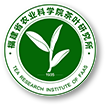Abstract:
Objective Effects of fertilization with varied combinations of fertilizers on tea yield and quality were studied for an efficient farming practice at plantations.
Method In Wen County, Gansu Province, at a plantation of Longjing 43 Tea bushes planted in 1999, a field experimentation was conducted using different combinations of fertilizers on separate lots. Along with no fertilization as control (CK), Treatment A that used rapeseed meal + fermented chicken manure + urea, Treatment B that employed a compound fertilizer + urea, Treatment C that applied an organic fertilizer + a urea formaldehyde slow-release fertilizer, and Treatment D that included an organic fertilizer + a urea formaldehyde slow-release foliar fertilizer were implemented with three replicates for each group. Water content and hundred-shoots weight as well as yield and quality of spring, summer, and autumn teas of the bushes on the lots were determined.
Result Treatment D significantly improved the indicators of quality and yield of the tea bushes, especially the 6.51% increased output on 3-season average fresh leaf weight over CK. On the other hand, Treatment C rendered the greatest 50.37% increase on the spring harvest but no significant difference between the summer and autumn outputs. Insofar as tea quality is concerned, Treatment C performed significantly better on the content of tea polyphenols with an increase of 7.76% over CK, as opposed to Treatment B with an 8.34% decline on polyphenols in the summer tea. Treatment D significantly reduced the phenol/ammonia ratio of spring tea by 21.32%, from 5.67 to 4.46 of CK, whereas the ratios of autumn tea ranked on the treatments as D>B>C>A. The treatment also raised the water extracts in tea leaves harvested in the spring and autumn by 4.23% and 2.23%, respectively. Assessed by the national sensory evaluation standard for green teas, the tea received the highest total score came from the lot under Treatment D.
Conclusion The combination of fertilizers used in Treatment D not only significantly increased the tea yield and quality but also effectively lowered the phenol/ammonia ratio in the summer tea, ant at the same time, resolved the slow releasing problem of organic fertilizer.




 下载:
下载: